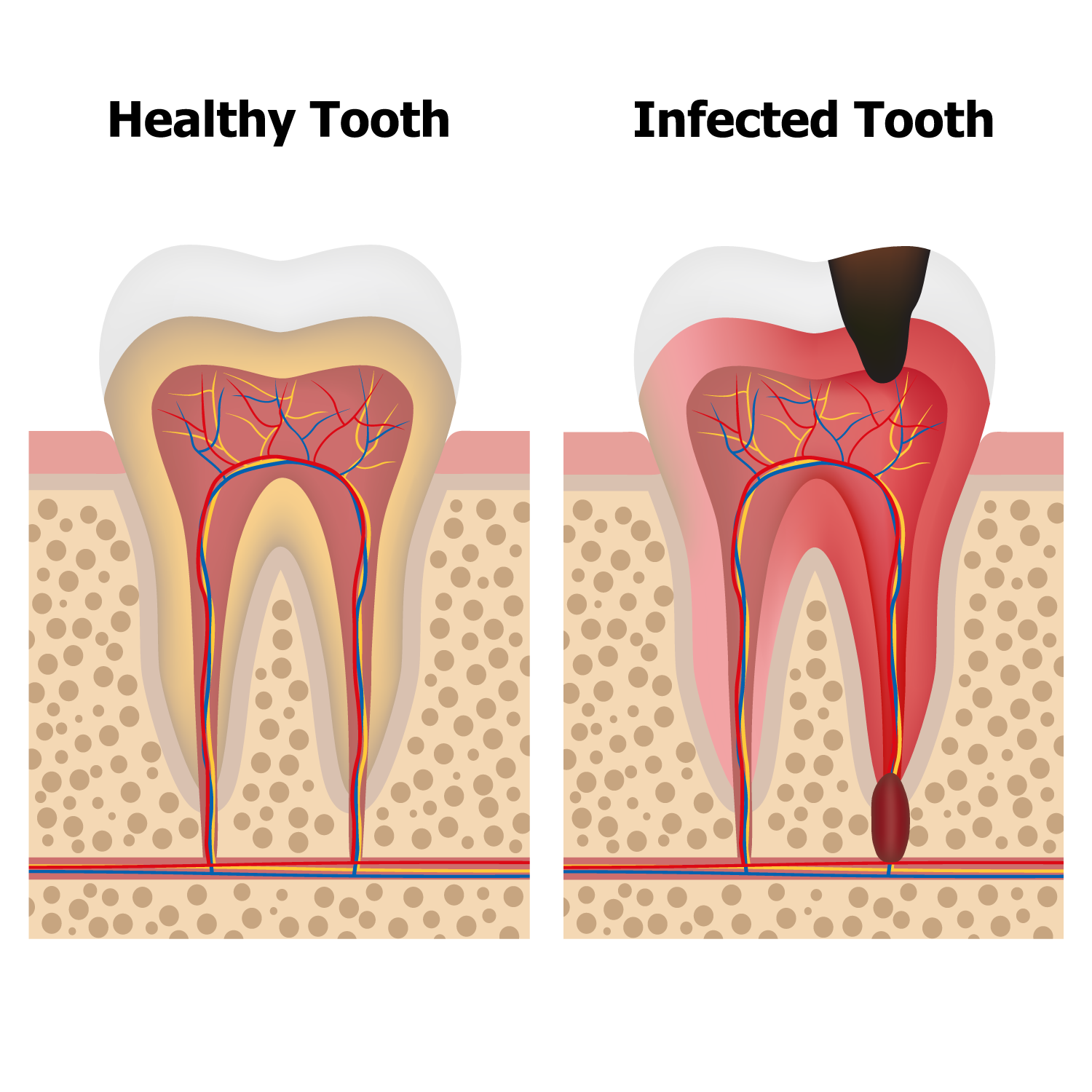Root Canal Therapy

If the nerve within one of your teeth becomes infected, root canal (endodontic) treatment can keep you from losing the tooth, while treating the infection before it causes major health complications.
An infected (abscessed) tooth causes discomfort in the form of swelling and toothache. It can also cause severe health complications, because the bacteria from the infection can enter the bloodstream and travel to other parts of the body.
One way to treat the infection is to remove the tooth and disinfect the area. However, tooth loss creates a gap between surrounding teeth that often necessitates a dental implant or bridge. It is always preferable to save a tooth, if possible, through root canal treatment.
A root canal should be no more uncomfortable than having a cavity filled, though the procedure is more complex. A root canal is the removal of infected or dead pulp (the inner nerves and blood vessels) from inside a tooth, and the subsequent filling and sealing of the resulting space.
Your dentist will begin the treatment by applying local anesthesia and isolating the area with a rubber dam. Then your dentist will drill an opening in the tooth to access the infected pulp. From there, he will remove the pulp and clean the area with specialized tools. Your dentist will fill the root space with a filling material. Finally he will seal the surface of the tooth with a crown to prevent further infection, and restore the function and appearance of the tooth.
The root canal treatment is typically performed in one visit. A second visit may be required to complete the crown restoration.
